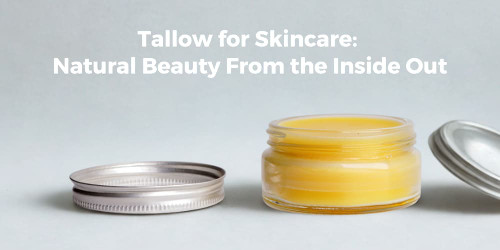Dermaplaning has gained popularity in recent years as a skincare treatment, leaving many intrigued and curious about its benefits and safety. In this blog article, we'll delve into the most frequently asked questions about dermaplaning, shedding light on what it is, its safety, and whether you truly need it for your skincare routine.
1. What is Dermaplaning?
Dermaplaning is a non-invasive cosmetic procedure that involves using a sterile surgical scalpel to gently scrape away the top layer of dead skin cells and fine vellus hair, commonly known as "peach fuzz." This process reveals smoother, more radiant skin underneath and is often referred to as a manual exfoliation technique.
2. Is Dermaplaning Safe?
Yes, when performed by a trained and skilled professional, dermaplaning is considered safe. The procedure is typically conducted in a controlled environment, ensuring proper hygiene and minimizing the risk of complications. However, it's crucial to seek out licensed and experienced estheticians or dermatologists to perform the treatment.
3. Does Dermaplaning Hurt?
Dermaplaning is generally painless. Most individuals describe the sensation as a gentle scraping or tingling on the skin. The procedure is well-tolerated, making it suitable for those with sensitive skin.
4. Can Dermaplaning Cause Skin Damage?
When performed correctly, dermaplaning is a low-risk procedure. However, it's essential to follow post-treatment care instructions provided by your skincare professional. Sun protection and the use of gentle skincare products are typically recommended to prevent any potential irritation.
5. Who Can Benefit from Dermaplaning?
Dermaplaning is suitable for individuals of all skin types, but it may be particularly beneficial for those with dry or rough skin texture. The treatment can help improve the absorption of skincare products, enhance the effectiveness of makeup application, and give the skin a smoother appearance.
6. Is Dermaplaning Suitable for Acne-Prone Skin?
Dermaplaning can be safe for individuals with acne-prone skin, but it's essential to avoid active breakouts and inflamed areas. Dermaplaning is not recommended for those with active acne, as it may exacerbate the condition. Consult with a skincare professional to determine the best course of action for your specific skin concerns.
7. How Often Should You Get Dermaplaning Done?
The frequency of dermaplaning depends on individual skin needs and goals. Many people opt for monthly sessions to maintain smooth and radiant skin. However, your skincare professional will assess your skin condition and recommend a suitable schedule.
8. Can I Dermaplane at Home?
While there are at-home dermaplaning tools available, it's generally safer to have the procedure performed by a trained professional. DIY dermaplaning carries a higher risk of accidents, such as nicks or cuts, and may not provide the same level of precision as a professional treatment.
9. Is Dermaplaning Necessary for Everyone?
Dermaplaning is not a necessity for everyone, but it can be a beneficial addition to a skincare routine for those seeking smoother skin texture and improved product absorption. If you are interested in dermaplaning, it's advisable to consult with a skincare professional to determine whether it aligns with your specific skincare goals.
Dermaplaning can be a fantastic option for achieving smooth, radiant skin, but it's essential to approach it with caution and understanding. By choosing a qualified professional and understanding the nuances of the procedure, you can make an informed decision about whether dermaplaning is the right choice for you and your skincare needs.
Can I Do It At Home?
While there are at-home dermaplaning tools and kits available, it's important to approach the idea of performing dermaplaning at home with caution. Here are some considerations:
1. Risk of Accidents:
Dermaplaning involves using a sharp blade to exfoliate the skin. Without proper training, there is an increased risk of accidents such as nicks, cuts, or irritation.
2. Lack of Precision:
Professional estheticians are trained to perform dermaplaning with precision, ensuring even exfoliation and minimizing the risk of uneven skin texture. At-home tools may not provide the same level of accuracy.
3. Sterilization and Hygiene:
Professionals use sterile, single-use blades in a controlled environment to minimize the risk of infection. Maintaining the same level of sterilization at home may be challenging.
4. Appropriate Technique:
Dermaplaning requires a specific technique to achieve optimal results. Without proper training, individuals may not be able to replicate the technique effectively.
5. Not Suitable for Active Acne:
Individuals with active acne should avoid dermaplaning on affected areas, as it can potentially worsen the condition. Determining the suitability of dermaplaning for specific skin concerns is best done by a skincare professional.
6. Professional Assessment:
A licensed esthetician or dermatologist can assess your skin condition, tailor the treatment to your specific needs, and provide personalized advice on skincare routines and aftercare.
7. Possible Irritation:
Without professional guidance, there is a risk of over-exfoliation, leading to skin irritation or sensitivity. Professionals can customize the treatment based on individual skin types and conditions.
8. Frequency and Consistency:
Determining the right frequency for dermaplaning depends on individual skin needs. A skincare professional can guide you on the optimal schedule for achieving and maintaining results.
Dermaplaning can be a fantastic option for achieving smooth, radiant skin, but it's essential to approach it with caution and understanding. By choosing a qualified professional and understanding the nuances of the procedure, you can make an informed decision about whether dermaplaning is the right choice for you and your skincare needs.
How to Safely Do Dermaplaning At Home?
If you decide to perform dermaplaning at home, it's crucial to follow proper precautions to ensure safety and achieve effective results. Here's a step-by-step guide on how to safely dermaplane at home:
Step 1: Gather Your Supplies
- Dermaplaning Tool or Razor: Choose a dermaplaning tool specifically designed for at-home use. These tools typically have a single, small blade.
- Cleanser: Use a gentle cleanser to thoroughly clean your face, removing any makeup, oil, or debris.
- Toner: Apply a toner to further cleanse and prepare the skin for dermaplaning.
- Mirror: Use a well-lit magnifying mirror to help you see the areas you'll be working on more clearly.
- Moisturizer: Have a soothing, hydrating moisturizer on hand to apply after dermaplaning.
Step 2: Wash Your Hands Clean hands reduce the risk of introducing bacteria to your skin during the dermaplaning process.
Step 3: Prepare Your Skin
- Pull Your Hair Back: Secure your hair away from your face to ensure it doesn't interfere with the dermaplaning process.
- Apply a Prepping Solution (Optional): Some at-home dermaplaning kits come with a prepping solution. If included, apply it to help soften the skin and hair.
Step 4: Begin Dermaplaning
- Hold the Skin Taut: Use your free hand to stretch the skin tightly, creating a smooth surface for the dermaplaning tool.
- Hold the Tool at a 45-Degree Angle: Hold the dermaplaning tool at a 45-degree angle and use short, controlled strokes in the direction of hair growth.
- Avoid Active Acne: Steer clear of any active acne lesions or inflamed areas to prevent irritation.
- Be Gentle: Apply light pressure. The goal is to remove dead skin cells and fine hair, not to cause cuts or abrasions.
Step 5: Cleanse Again After dermaplaning, cleanse your face to remove any loose hairs or debris.
Step 6: Apply Moisturizer Finish the process by applying a hydrating moisturizer to soothe the skin.
Step 7: Sun Protection Apply a broad-spectrum sunscreen with at least SPF 30 to protect your newly exposed skin from UV damage.
Tips for Safety:
- Follow the Instructions: If you're using an at-home dermaplaning kit, carefully follow the provided instructions.
- Don't Overdo It: Dermaplaning should be done once every 3-4 weeks. Overdoing it can lead to irritation and sensitivity.
- Replace Blades: If your dermaplaning tool uses replaceable blades, ensure they are sharp and clean. Replace them as recommended by the manufacturer.
- Consult a Professional: If you're unsure or have specific skin concerns, consider consulting with a skincare professional before attempting dermaplaning at home.
Remember, while at-home dermaplaning is an option, it's crucial to prioritize safety and hygiene to achieve the best results and avoid potential risks. If you have any doubts or concerns, seeking professional guidance is always a wise choice.















